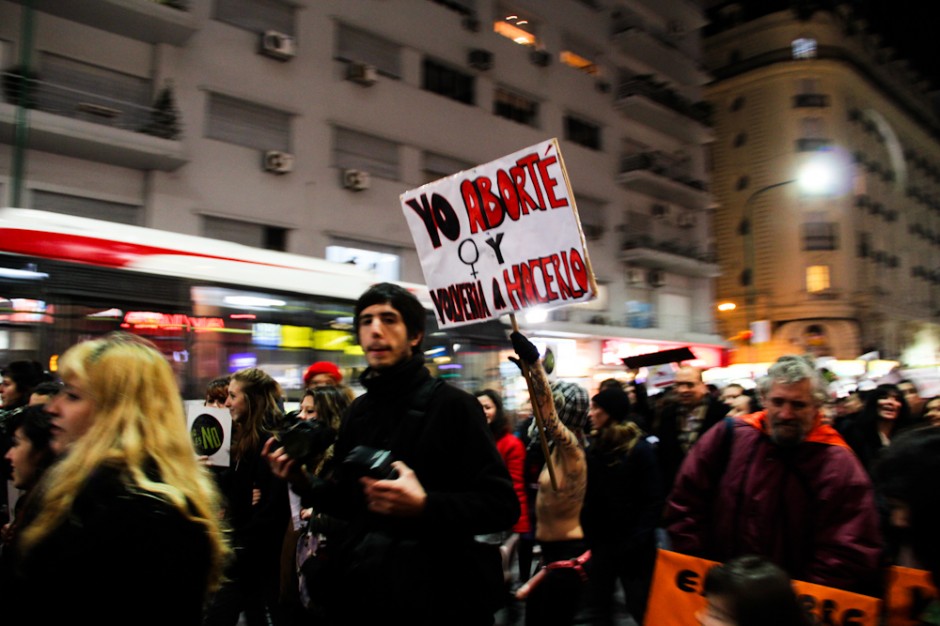One of many Ladies in Red. All photos by the author.
LA MARCHA DE LAS PUTAS, loosely translated as the “Slutwalk,” made its bold debut in Buenos Aires this past Friday, and even a week later the city is still contemplating its significance.
This past January, a police officer in Toronto suggested that “women should avoid dressing like sluts in order not to be victimized” as part of his plan to cut down crimes against women. From this comment, The Slutwalk was born and has since hit the streets of major cities such as Toronto, Mexico City, London, Sydney, Buenos Aires, and has become one of the most successful feminist actions of the past 20 years. As opposed to the word “slut” being constantly referred to with a negative connotation or an invitation for sexual or physical harm, this movement is redefining the term as a piece of vocabulary that simply displays what they were preaching on Friday: that “no means no” and there is never an excuse for sexual violence against women.
Movements such as these are not new in today’s society and the 5,000 marchers that attended London’s Slutwalk can attest to this. However, we are not in London where gender equality is considered an obvious part of society as opposed to a constant struggle. This march came to Buenos Aires, Argentina, where machismo has long been an integrated part of society. While some of the crowd was wearing typical casual dress, there were also a large number of marchers wearing “slutty” clothing in hopes of emphasizing a woman’s right to choose how she wants to present herself, not a preventative measure against violent crime. Heads turned and jaws dropped as Buenos Aires witnessed this outspoken and bold body of ladies in red.
Thirty countries within Latin America have enacted laws to prevent violence against women, but like other parts of the world, this continues to be an ongoing struggle within society. If laws are failing to protect, then women are now realizing it’s time to start changing the attitudes and the perspective with which women are viewed. La Marcha de Las Putas may not have changed macho attitudes overnight, but it created awareness and supported the work of many Latin American feminists who have dedicated their lives to the fight towards gender equality. In Argentina, protest and displays of political activism persist everywhere, but the fight for gender equality is often a hidden one. The march caused a natural ripple effect of awareness, discussion, and contemplation.
An active protest against gender-based violence, such as this march, is not only for the rights of a female but important for the sake of a culture in general. As some view La Marcha de las Putas as merely a feminist protest concentrated only within women’s circles, it needs to be considered what violent acts do to a society. Excused violence or dominating attitudes against gender creates a fragmented society and can slow the social and economic development of a country. Separation is not growth, and this march was just one example of women coming together around the world and now within Latin America to close the gap, walk with their heads held high, and march onwards without fear.



Intermission




Intermission




Intermission






